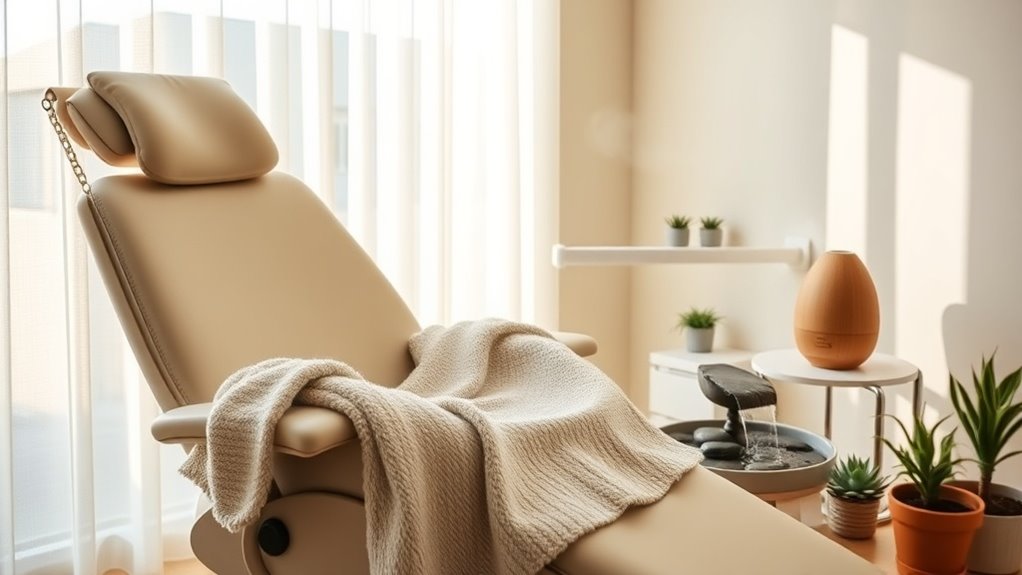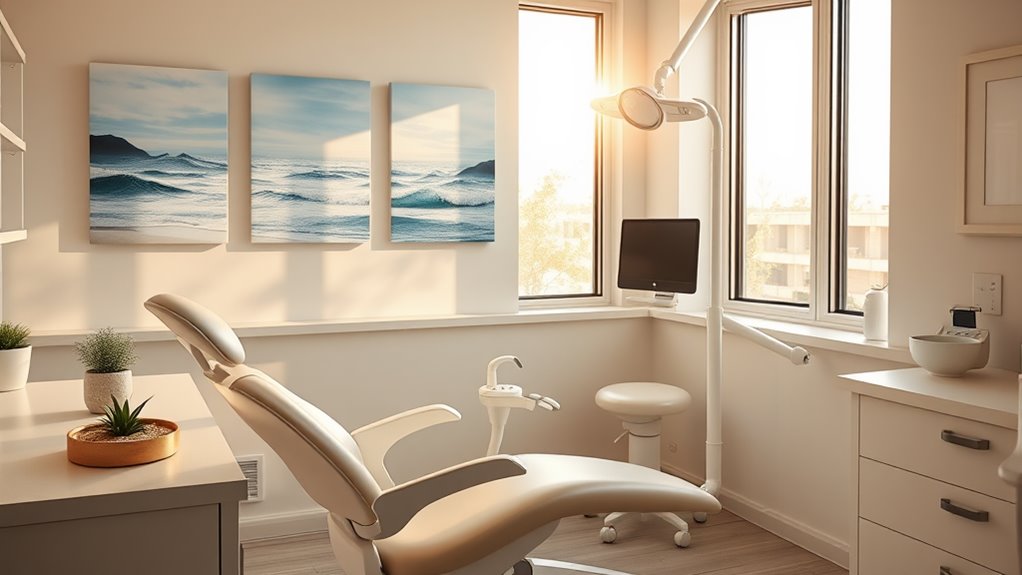Relaxation Tips for Nervous Dental Patients
If you’re feeling anxious about your upcoming dental appointment, you’re not alone. Many people experience nervousness in the dental chair. Fortunately, there are several effective relaxation techniques that can help ease your anxiety. From deep breathing exercises to visualization strategies, simple practices can transform your experience. Let’s explore the various methods that could lead to a more comfortable visit and improve your dental care journey.
Breathing Techniques for Anxiety Relief
Many people experience anxiety before dental appointments, but employing effective breathing techniques can help calm those nerves. Focus on slow, deep breaths, inhaling through your nose for four counts, then exhaling through your mouth for six counts. This simple method promotes relaxation and reduces tension. Engaging in diaphragmatic breathing regularly can significantly enhance your overall well-being. Incorporating these relaxing dental tips into your routine can make your visit much more manageable and pleasant.
Visualization Strategies for a Calm Mind
Pairing breathing techniques with visualization can greatly enhance your ability to manage anxiety before a dental visit.
Picture a serene setting, like a beach or forest, where you feel safe and relaxed. As you breathe deeply, immerse yourself in the details: the sounds, scents, and colors.
This mental escape helps ground you, creating a calm mindset as you prepare for your appointment.
The Role of Music in Reducing Dental Anxiety
Listening to music can be a powerful tool to ease your dental anxiety and create a soothing environment. You’ll want to contemplate the type of playlist that works best for you, whether it’s calming instrumentals or soft vocals, as well as the volume and sound quality of your chosen tracks. Incorporating aromatherapy with essential oils can further enhance your relaxation experience during dental visits.
Calming Playlist Recommendations
How can the right music transform your dental experience? A calming playlist can distract you from anxiety and create a soothing atmosphere. Here are some recommended genres and their benefits:
| Genre | Benefits |
|---|---|
| Classical | Reduces stress, promotes relaxation |
| Ambient | Creates a tranquil environment |
| Acoustic | Warm, gentle sounds |
| Nature Sounds | Instills peace and comfort |
Instrumental vs. Vocals
While both instrumental music and vocals can play a significant role in reducing dental anxiety, the impact they’ve varies from person to person.
Instrumental tracks may help you focus on relaxation, while vocal melodies might provide a comforting connection.
Experimenting with different styles lets you find what soothes you best, enhancing your overall dental experience and making appointments more manageable.
Volume and Sound Quality
Finding the right volume and sound quality for your music can greatly influence your dental experience. Soft, soothing tunes at a comfortable volume can distract you from dental sounds, easing anxiety. Here’s a quick reference to help you choose your music settings:
| Aspect | Recommendation |
|---|---|
| Volume | Low to moderate |
| Sound Quality | Clear, no distortion |
| Genre | Ambient or classical |
| Duration | Continuous throughout |
| Personal Preference | Use familiar tracks |
Mindfulness and Meditation Practices
As you prepare for your dental appointment, incorporating mindfulness and meditation practices can greatly ease anxiety and enhance your overall experience.
Try these techniques:
-
Deep Breathing: Inhale deeply through your nose, then exhale slowly through your mouth.
-
Visualization: Imagine a calming scene, like a beach or forest.
-
Body Scan: Focus on relaxing each body part, starting from your toes.
-
Guided Meditations: Use apps or videos to follow along.
Additionally, engaging with mindfulness techniques can help create a calm environment and improve your dental experience.
Comfort Items to Bring to Your Appointment
After calming your mind with mindfulness techniques, it’s helpful to contemplate bringing comfort items to your dental appointment. Consider packing headphones to listen to soothing music, a stress ball to squeeze during your visit, or a comforting blanket. These items can create a sense of familiarity and security, making the experience less intimidating and more manageable for you. Additionally, you might find it beneficial to communicate feelings of anxiety to the dentist for tailored comfort strategies, which can enhance your overall experience.
Communicating Your Fears With Your Dentist
It’s important to have an open dialogue with your dentist about any fears you might have.
By sharing your specific worries, you can help your dentist tailor their approach to make you feel more comfortable.
Establishing this trusting relationship can greatly enhance your overall dental experience. Additionally, open communication allows your dentist to provide reassurance and discuss any procedures in advance, which can alleviate apprehension.
Importance of Open Dialogue
While facing dental procedures can often be intimidating, opening up about your fears and anxieties with your dentist is essential for a more relaxed experience.
Consider these benefits of open dialogue:
- Builds trust between you and your dentist.
- Helps customize your treatment plan.
- Reduces anxiety through understanding.
- Encourages a supportive environment.
Let your dentist know—it’s a key step towards comfort.
Sharing Specific Fears
Communicating your specific fears to your dentist is essential, as sharing these concerns fosters a deeper understanding of your needs.
Be honest about what worries you, whether it’s pain, needles, or even the sounds in the office.
This transparency allows your dentist to adjust their approach, making your experience more comfortable and tailored, ultimately helping you feel more relaxed during your visit.
Establishing Trusting Relationship
Building a trusting relationship with your dentist can greatly enhance your comfort during appointments.
To communicate your fears effectively, consider these tips:
- Be honest about your anxiety.
- Discuss previous negative experiences.
- Ask questions to understand procedures.
- Request breaks during treatment if needed.




